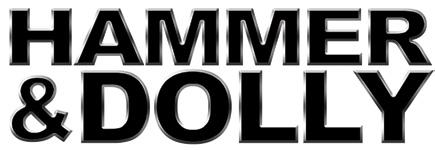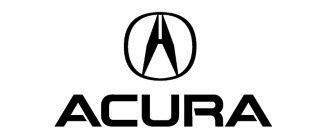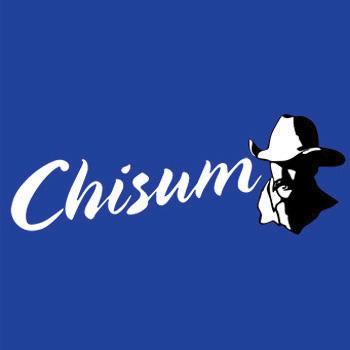















Steven Krieps (304) 755-1146
skrieps@live.com

















Steven Krieps (304) 755-1146
skrieps@live.com
What do you do? Think about it. Is it really a simple question in regard to running a collision repair center? Ever have any issues dealing with a bank for operating capital, and it seems like they just don’t understand some of the cash flow versus reserve issues? What about consumers who don’t understand how the automaker they chose to purchase a vehicle from can’t seem to provide the part needed to repair their vehicle, and each day it seems to become your fault. Or that repair procedure from the OEM service manual that seems to just be missing something?
I have always thought of the expression “jack of all trades” as a negative, but dig a little deeper and you see that may not be the case. In today’s modern collision repair center, it seems we are tasked with more than just vehicle repair. We have now become claim reps, psychologists, paralegals, counselors, life coaches (even though we probably need them ourselves), insurance adjusters/investigators, documentation specialists, photographers, accident reconstructionists, metallurgists, negotiators, and I will bet that you can add to this list exponentially. You could hire one person to specialize in each of these critical areas, but where do the funds for these positions come from, especially given the Labor Rate debacle which we will not discuss today? So, we are left with a seemingly impossible task.
What I’m getting at is, in order to be successful, you need to spend as much time as possible on self-development personally and professionally to thrive in the modern collision repair world.
WMABA OFFICERS
PRESIDENT Steven Krieps steve@gregclineauto.com 304-755-1146
VICE PRESIDENT Rodney Bolton boltonconsulting61@gmail.com 443-386-0086

TREASURER Kris Burton kris@rosslynautobody.com 703-820-1800
SECRETARY Phil Rice phil@ricewoods.com 540-846-6617
IMMEDIATE PAST PRESIDENT Torchy Chandler Torchy Chandler torchy.chandler@gmail.com 410-309-2242
BOARD OF DIRECTORS
Don Beaver (donbeaver3551@gmail.com) 443-235-6668
Barry Dorn (bdorn@dornsbodyandpaint.com) 804-746-3928
EXECUTIVE DIRECTOR
Jordan Hendler (jordanhendler@wmaba.com) 804-789-9649

WMABA CORPORATE OFFICE
P.O. Box 3157 • Mechanicsville, VA 23116
Bill Hawkins (hawkinswilliamjr@gmail.com) 510-915-2283
John Shoemaker (john.a.shoemaker@basf.com) 248-763-4375

You will need to study the science and art of negotiation, the legal requirements of your profession within your state and how to manage the new generation (who, I promise, is not like you). Now more than ever, things are changing and coming to a head every day as it becomes increasingly clear that the current version of the “old way” has been stapled, taped, glued, welded and patched as much as possible…and the monstrosity will not hold itself up much longer. The insurance claims landscape is almost unrecognizable. Even in the insurance world, the old and the new are clashing and spilling over into all areas of their business. Don’t believe me? Take some time on your next call with a claims rep and see if you can have an honest one-on-one about their day.
A jack of all trades is a master of none, but oftentimes better than a master of one. The path to success for a generalist is a rock wall versus a specialist, which is like a ladder. A generalist can move up, down, left and right as needed to adapt to changes and obstacles, where a specialist has but one path – and if it changes or is altered, it can create real problems. Take time this year to improve yourself and your people. I know time seems to be in short supply, but if it’s not taken, you may lose more than just time.
(Shameless plug: Get involved with the industry, and take classes through the multitude of available resources – WMABA, DEG, SCRS, CIC to name just a few.) H&D


HAMMER & DOLLY STAFF
PUBLISHER Thomas Greco thomas@grecopublishing.com
SALES DIRECTOR Alicia Figurelli alicia@grecopublishing.com
EDITORIAL/CREATIVE Alana Quartuccio Bonillo COORDINATOR alana@grecopublishing.com
MANAGING EDITOR Chasidy Rae Sisk chasidy@grecopublishing.com
OFFICE MANAGER Donna Greco donna@grecopublishing.com
PRODUCTION Joe Greco COORDINATOR joe@grecopublishing.com

@grecopublishing
PUBLISHED BY TGP, Inc. 244 Chestnut St., Suite 202 Nutley, NJ 07110 973-667-6922 FAX 973-235-1963
Reproduction of any portions of this publication is specifically prohibited without written permission from the publisher. The opinions and ideas appearing in this magazine are not necessarily representations of TGP Inc. or of the Washington Metropolitan Auto Body Association (WMABA). Copyright © 2023 Thomas Greco Publishing, Inc.
Stock Images courtesy of istockphoto.com.
www.grecopublishing.com


Can I use a dramatic title to catch your attention? I hope that I have.
It’s a really big amount of effort from WMABA and the Carolinas Collision Association to bring Virginia its first-ever tradeshow in the Southeast Collision Conference, along with our Collision P.R.E.P. classes, all coming to the Richmond, VA-area when other national opportunities will also be present. The Collision Industry Conference – a large open industry forum with open discussion – and SCRS’ industry meetings, will also be placing themselves square in our region in the same week.
It’s a big deal because you’re here, and you need this opportunity as much as it needs you to be there for it.
Members beg for good education at the front door, and this is your front porch. Even if you’re coming from Maryland or West Virginia, the drive to Richmond is more reasonable than having to fly across the country for what in coming in April.
I want you to get your kid- or dog-sitter situated, tell your family this is a high priority and make this happen – for YOURSELF. You need this, your colleagues need this, and your associations who support you need you there to come experience just how much you can grow when given the right amount of “water, fertilizer and sunlight”. The classes and vendors are major collaborations to give you both information and empowerment to be more readied for vehicle advancements still even yet to come.
The panel discussions alone are reason enough, with both all-EV OEMs and traditional OEMs with EV models diving into the electrification of vehicles and how to manage them in your repair facilities. That means before they get to you, when they are there, and during the repair process. Special considerations and preparations must be made even for the safety of the employees handling them. The other panel discussion of “Repairer to Repairer” is going to expose all the current issues every shop faces, but with the assurances of those who’ve made strides to lead the rest of the industry with their successes, and failures too. Let them show you how they’ve changed and evolved, and how
you can as well.
Presented by

If you don’t put on the armor of education, relationships, and tooling, you are quite literally exposed to everything. You’re exposing your customers to safety issues, your business to profit losses, and your sanity to well, insanity.
Come to the CIC, SCRS meetings April 12/13, and stay the Friday and Saturday April 14/15 to attend SCC, the education, take part in the tradeshow vendor offerings and demonstrations, and even have fun with contests, door raffles and prizes!
I assure you, it will be better to come and feel alive than to miss out on what will be the event of the year! H&D







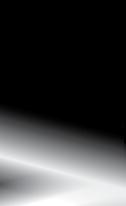







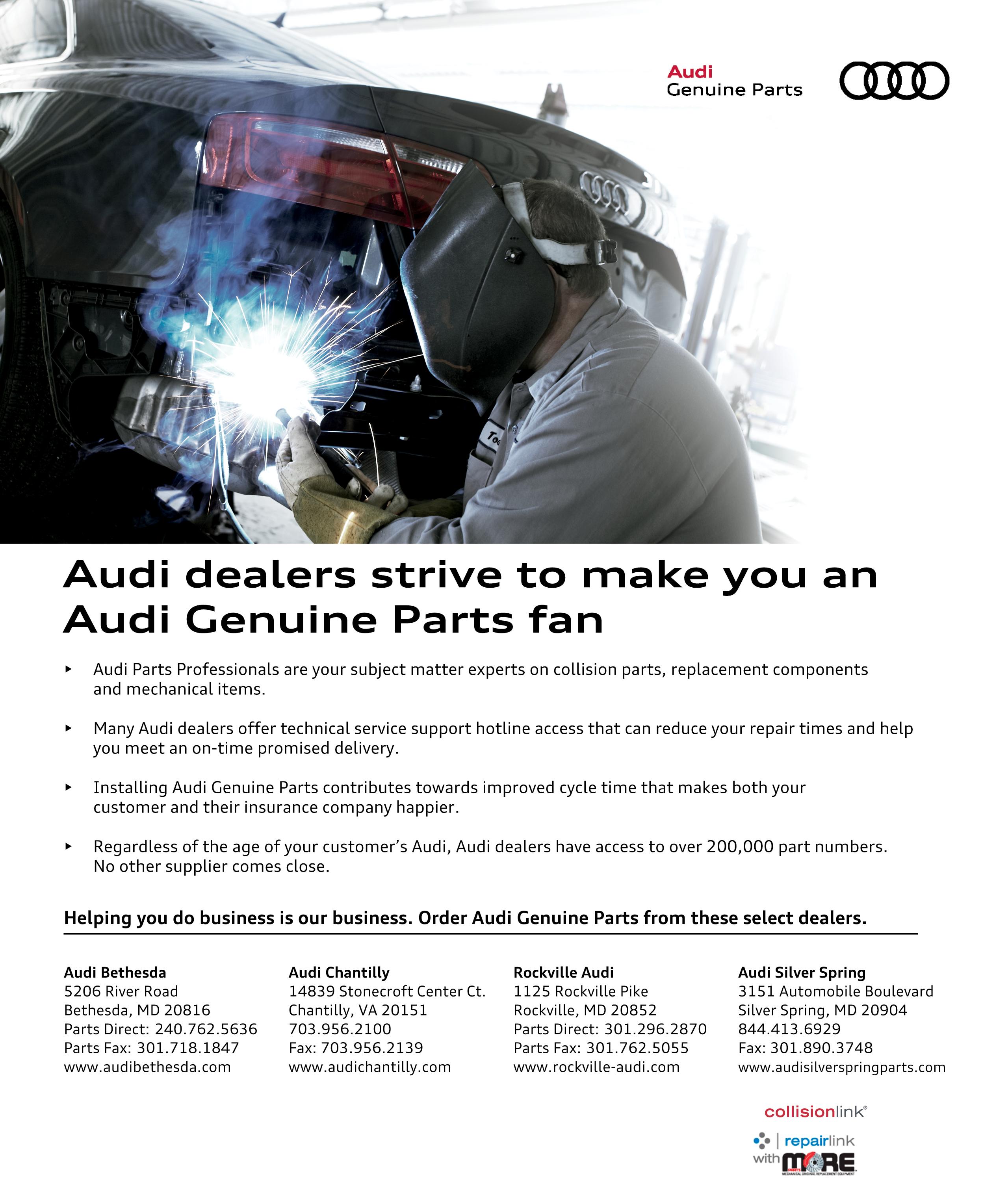
FRIDAY 4/14 FRIDAY 4/14
8:30am – 10:00am | Be Extraordinary!
8:30am – 10:00am | Be Extraordinary!
Presented by: Mike Anderson, Collision Advice
Presented by: Mike Anderson, Collision Advice
SATURDAY 4/15 SATURDAY 4/15
11:00am – 12:30pm | Preparing your Shop for Electric Vehicles: Repair Strategies and Vehicle Management [PANEL DISCUSSION]
11:00am – 12:30pm | Preparing your Shop for Electric Vehicles: Repair Strategies and Vehicle Management [PANEL DISCUSSION]
2:00pm – 3:00pm | Option 1 Properly Identifying
Labor Types and Rates
2:00pm – 3:00pm | Option 1 Properly Identifying Labor Types and Rates
Presented by: John Shoemaker, BASF
Presented by: John Shoemaker, BASF
2:00pm – 3:00pm | Option 2, How to Open and Operate a Successful ADAS Services and


2:00pm – 3:00pm | Option 2, How to Open and Operate a Successful ADAS Services and Calibration Business
Calibration Business

Presented by: Frank M. Terlep, VP ADAS Services, OPUS IVS
Presented by: Frank M. Terlep, VP ADAS Services, OPUS IVS
4:30pm – 5:30pm | Option 1, Repair Planning
4:30pm – 5:30pm | Option 1, Repair Planning
Resources: Write Your Strongest Sheet
Resources: Write Your Strongest Sheet
Presented by: Danny Gredinberg, the DEG
Presented by: Danny Gredinberg, the DEG
4:30pm
4:30pm – 5:30pm | Option 2, Keeping ADAS Calibrations in House
5:30pm | Option 2, Keeping ADAS
Calibrations in House
Presented by: Josh McFarlin, Executive VP of Operations, AirPro Diagnostics
Presented by: Josh McFarlin, Executive VP of Operations, AirPro Diagnostics
8:30am – 9:30am | Option 1, From an Auditors’ Perspective, where Repairers are Hitting and Missing the Objectives
8:30am – 9:30am | Option 1, From an Auditors’ Perspective, where Repairers are Hitting and Missing the Objectives
Presented by: Dennis Smoyer and Rick Miller, Wadsworth International / Subaru and Jaguar
Land Rover
Presented by: Dennis Smoyer and Rick Miller, Wadsworth International / Subaru and Jaguar Land Rover
8:30am – 9:30am | Option 2, Organization and process = profitability.

8:30am – 9:30am | Option 2, Organization and process = profitability
Presented by: Mark Olson, VECO Experts
Presented by: Mark Olson, VECO Experts
11:00am – 12:30pm | Repairer to Repairer: Open Discussions on Shop Trends and more! [PANEL DISCUSSION]
11:00am – 12:30pm | Repairer to Repairer: Open Discussions on Shop Trends and more! [PANEL DISCUSSION]
2:00pm – 3:30pm | Repairer to Repairer: Stop
2:00pm – 3:30pm | Repairer to Repairer: Stop Estimating and Start Repair Planning
Estimating and Start Repair Planning
Presented by: Michael Bradshaw, Vice President – K & M Collision; Secretary – Society of Collision Repair Specialists
Presented by: Michael Bradshaw, Vice President – K & M Collision; Secretary – Society of Collision Repair Specialists
TRADESHOW IS FREE EDUCATION PASS $17
IS FREE EDUCATION PASS $17
$99 MEMBERS
MEMBERS
www.SoutheastCollisionConference.com www.SoutheastCollisionConference.com
www.SoutheastCollisionConference.com www.SoutheastCollisionConference.com
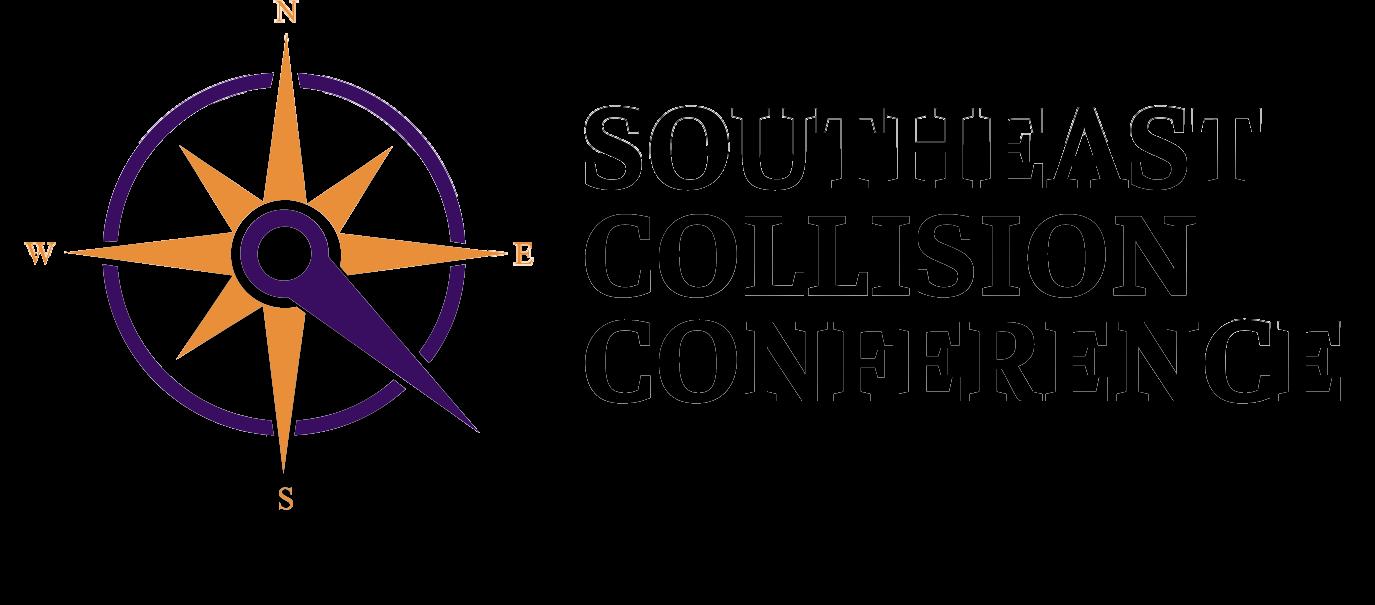







Do you know the right person for the job? Is it YOU?
The future of the industry depends on continued interest in the field of collision repair. That interest can be fueled by strong programs in our schools. Industry impact requires intentional involvement!


Who do you know that might be right to invest in the next generation of collision repair professionals by becoming an instructor?
Northern Virginia Community College (NOVA) is looking far and wide for the best candidates to train hundreds of new techs and help advance their ability to connect with the best employers. Please share these postings with anyone who you think would be an excellent instructor and who can work well to develop and enhance industry partnerships.H&D


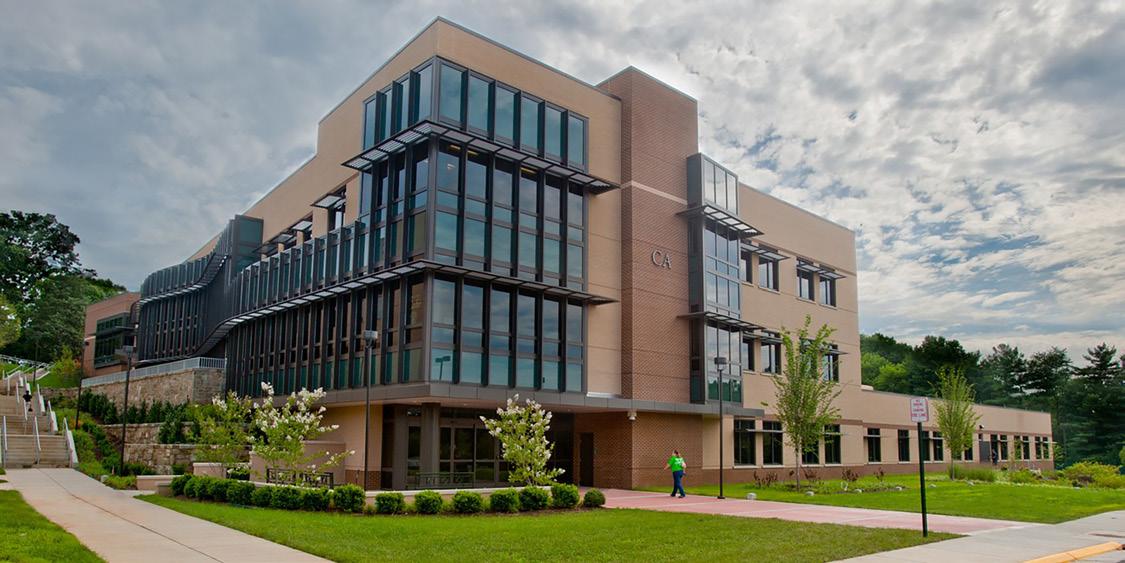
NOVA Contact:



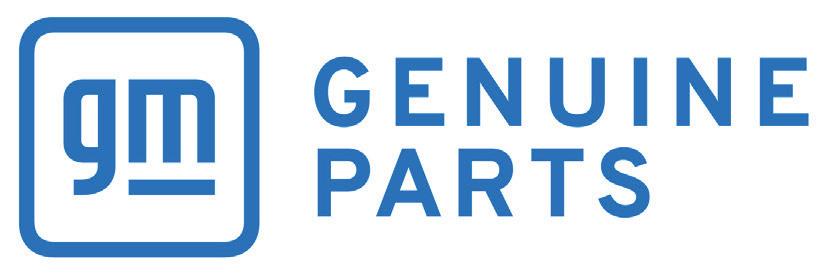







THERE HAS NEVER BEEN A BETTER WAY TO BUY THE WORLD’S BEST ENGINEERED PARTS.
THEY’RE CALLED “ORIGINAL BMW PARTS” FOR GOOD REASON. FOR UNCOMPROMISING PRECISION AND INCOMPARABLE QUALITY, YOUR BMW CENTER IS YOUR ONE-STOP SHOP FOR EVERYTHING BMW.
For Original BMW Parts, contact one of these authorized BMW centers:

BMW of Silver Spring
3211 Automobile Blvd
Silver Spring, MD 20904
866-737-8937
Direct: 301-890-3015
Fax: 301-890-3748
bmwofsilverspring.com
Passport BMW 5000 Auth Way
Marlow Heights, MD 20746

301-423-0733
Fax: 301-423-2717
passportbmw.com
Richmond BMW 8710 West Broad Street Richmond, VA 23294
800-237-0130
Direct: 804-527-6860
Fax: 804-965-6254
Email: tdailey@crownauto.com
richmond-bmw.com
BMW of Catonsville 6700 Baltimore National Pike Baltimore, MD 21228
855-996-2906
410-744-2000
Fax: 410-818-2600
bmwofcatonsville.com

Collision repair facilities around the country are in desperate need of new talent to address the ongoing workforce shortage, yet a lack of qualified young professionals are entering the industry for many reasons. Many schools’ collision programs are underfunded, and post-secondary students seeking to enhance their skills and knowledge often struggle to afford tuition and tools.

The Collision Repair Education Foundation (CREF) addresses these needs through its Collision School Career Readiness Benchmark Grants and Student Scholarship awards, thanks to support from many generous industry donors and sponsors.
In 2022, CREF awarded $436,000 in grants to nearly 70 schools, impacting over 35,000 students. The Benchmark Grants recognize those programs that excel at educating students but which require additional financial assistance due to constrained school budgets, providing funds to purchase the tools, equipment and supplies
necessary to enhance their students’ learning experience and elevate the caliber of their graduates.
The 2022 Student Scholarships benefitted 46 students with almost $150,000 awarded in financial assistance to ensure those students were able to continue their education, preparing them to pursue a successful career in body shops around the country.
Applications for CREF’s 2023 Student Scholarships are now open, with a deadline of March 9, 2023.
Applications for CREF’s 2023 School Benchmark Grants are open through June 28, 2023.
To apply for a Benchmark Grant or Student Scholarship, visit bit.ly/CREFapply. Learn more about supporting CREF’s efforts to promote the industry to future generations at CollisionEducationFoundation.org H&D
The Society of Collision Repair Specialists (SCRS) introduced several new initiatives and benefits in 2022, and the first Open Board Meeting of 2023 provided an opportunity to “reflect on the accomplishments of the past year and their importance to this organization, this industry and the people we represent,” SCRS Executive Director Aaron Schulenburg stated. “We have a responsibility to be the voice for the industry and to assist with the issues they face. The rest of the industry counts on this organization to be the leader that identifies challenges and offers resources to address those needs.”
And as the rest of the meeting focused on providing updates on those “initiatives that have taken years of work and development to ensure we found the right solutions for this industry,” Schulenburg encouraged attendees to “carry the water back to your own markets, members and customers who gave us guidance and feedback on the things that are important. This is all because of you and for you. We want to make sure everyone
has access to this information and these resources.”
SCRS offers a plethora of resources for collision repair professionals, and the organization’s latest and greatest offering is its healthcare plan through Decisely. “Businesses we represent asked us to solve their healthcare problem; they were paying exorbitant amounts of money for coverage that’s only there in the event of a catastrophe, but though it wasn’t improving anybody’s lives, they just didn’t have any better options,” Schulenburg recalled, explaining the SCRS healthcare program is saving participating businesses 10-15 percent on average compared to what they were paying before, plus “the coverage is so much better than they were previously able to offer, thanks in part to the extensive list of no-cost services.”
He also provided an update on the SCRS 401(k) retirement plan, which had recently seen a reduction in the cost structure after exceeding the 250-participant threshold. But the most important component of these offerings extends into how it helps collision

businesses retain their employees. (Hammer & Dolly provided an in-depth look at these benefits in last month’s edition, available at grecopublishing.com/hd0223natlfeature.)
“We want to make this a more attractive place for people to work,” Schulenburg stressed. “If we can provide better opportunities for our employees, they will be grateful for the opportunities they have in our businesses, and they will feel more connected to us. That’s what we really want, and that’s why these benefits are such a win for the industry.”
An equally important initiative that SCRS undertook last year was the highly-anticipated blend study conducted in collaboration with AkzoNobel, Axalta, BASF, PPG and SherwinWilliams (available for download at scrs.com/ blendstudy). Over the past two decades, collision repairers expressed repeatedly that the blend formulas documented by the information providers (IPs) did not align with what they experienced in their repair facilities, according to Schulenburg.
“All three designate a blend as 50 percent of that full refinish value, but our members have long said that painting a panel from edge to edge is easier and less time-consuming than to create an invisible transition of color to facilitate a color match; they insisted that it requires more skill. For well over a decade, we asked the IPs to reevaluate whether or not these blend values are still appropriate, but all three companies routinely replied with the same response: ‘We’re standing by our formula.’ Yet, their test results were proprietary. They wouldn’t share how they came to those values, and they wouldn’t re-evaluate it.

“So, SCRS pulled together all five North American coatings companies to conduct an accurate, scientifically-driven study,” Schulenburg continued. “Rather than compare each company’s operational time, we agreed to express it in percentages. We compared the process of applying color to a full panel versus blending to accommodate a color match. And when we published our white paper and presented our findings at the Collision Industry Conference in November, no one was surprised by the results.” (Read the recap of the unveiling of the study results at grecopublishing.com/ hd1222cic2022).

Since the release of the blend study white paper, SCRS has engaged in positive dialogue with all three IPs, each working through their own processes internally, with at least one who has agreed to conduct their own research and respond by the end of Q1. “We provided meaningful data that was conducted impartially and which provides enough information to get them to re-evaluate this 50 percent ratio that does not reflect what shops actually experience. Colors today aren’t the same as they were 30 years ago. Cars aren’t the same, and customers’ expectations aren’t the same. It’s all so much more complex, and our investment in this critical research helps serve as a foundation for discussions that impact a great number of people in our industry.”
SCRS sees the success of the blend study as an opportunity to address similar issues in the industry in situations where the processes or the numbers simply don’t make sense or are not reflective of what technicians encounter in real-world scenarios. Expect to see additional studies conducted in the near future to help advance the industry and make a difference for small and large shops across the country.
Many of the discrepancies found in the estimating products can be addressed through the Database Enhancement Gateway (DEG), a free resource available to the entire industry. SCRS Board member Barry Dorn (Dorn’s Body & Paint; Mechanicsville, VA) announced that 60 percent of the inquiries submitted to the DEG last year resulted in a net change. “That’s the power of what the DEG does. It provides a way for us to collaboratively push the boulder up the hill together.”
Dorn turned the microphone over to Nick Schoolcraft (Phoenix Solutions Group) who shared highlights about the updated site. “Security has been enhanced, and the ability to input inquiries will be much faster and more user-friendly,” he promised. “Users will be able to dive deeper into each individual query, plus we increased the overall speed of the website, leveraged mobility so it will be usable on mobile devices and updated the structure of the database to improve the reporting feature.” Stay tuned to Hammer & Dolly for an upcoming in-depth look at the new and improved DEG site, available at degweb.org
SCRS Treasurer Robert Grieve (Nylund’s Collision Center; Englewood, CO) shared an update on the Blueprint Optimization Tool (BOT), which “takes a repair plan written by a shop and suggests potentially forgotten operations. The BOT allows us to build consistency with different blueprinters, and since its inception, 66,000 operations have been added to estimates across the country that probably would
not have been added. If we assume each operation took just half an hour, billed at $50 an hour, that’s $1.7 million moved onto body shops’ balance sheets, and that’s pretty exciting!” Learn more about the BOT at scrs.com/bot
Another resource SCRS has provided auto body repairers for some time is the continued release of its Quick Tips videos, co-hosted by Mike Anderson (Collision Advice) and Danny Gredinberg (DEG).
SCRS Secretary Michael Bradshaw (K&M Collision; Hickory, NC) noted that recent installations have also included consumer-facing videos that can be used “as a resource to help educate consumers on repair processes and also to address questions they may have about coverages or how the claims process works.”
Schulenburg challenged shops to share these consumer-facing videos to their local Facebook marketplaces. “Those consumer pages have thousands of consumers in your marketplace, and this is an opportunity to share free educational material with your community. Get in front of your community, encourage them to ask you more questions about it, and set yourself up as the subject matter expert. We want to get these videos in front of as many consumers as possible!”
The 2022 installment of SCRS’s Repairer Driven Education series reached more attendees than ever before. “We hosted our most wellregistered and best-attended live program in the 13-plus years we’ve been delivering education at the SEMA Show,” Schulenburg shared, also noting that SCRS saw a 300 percent increase in new member growth in Q4 of last year compared to the final quarter of 2021. It was a wildly successful year, but we’re always looking for new opportunities to make it a little more special and re-evaluate how to best bring these training sessions to as many repairers as possible. 2022 sessions are now available online at rde.scrs.com

“We want to expose as many shops as possible to topics that will help open their eyes and encourage them to step out of their businesses and come to these events where they leave feeling
continued on pg.
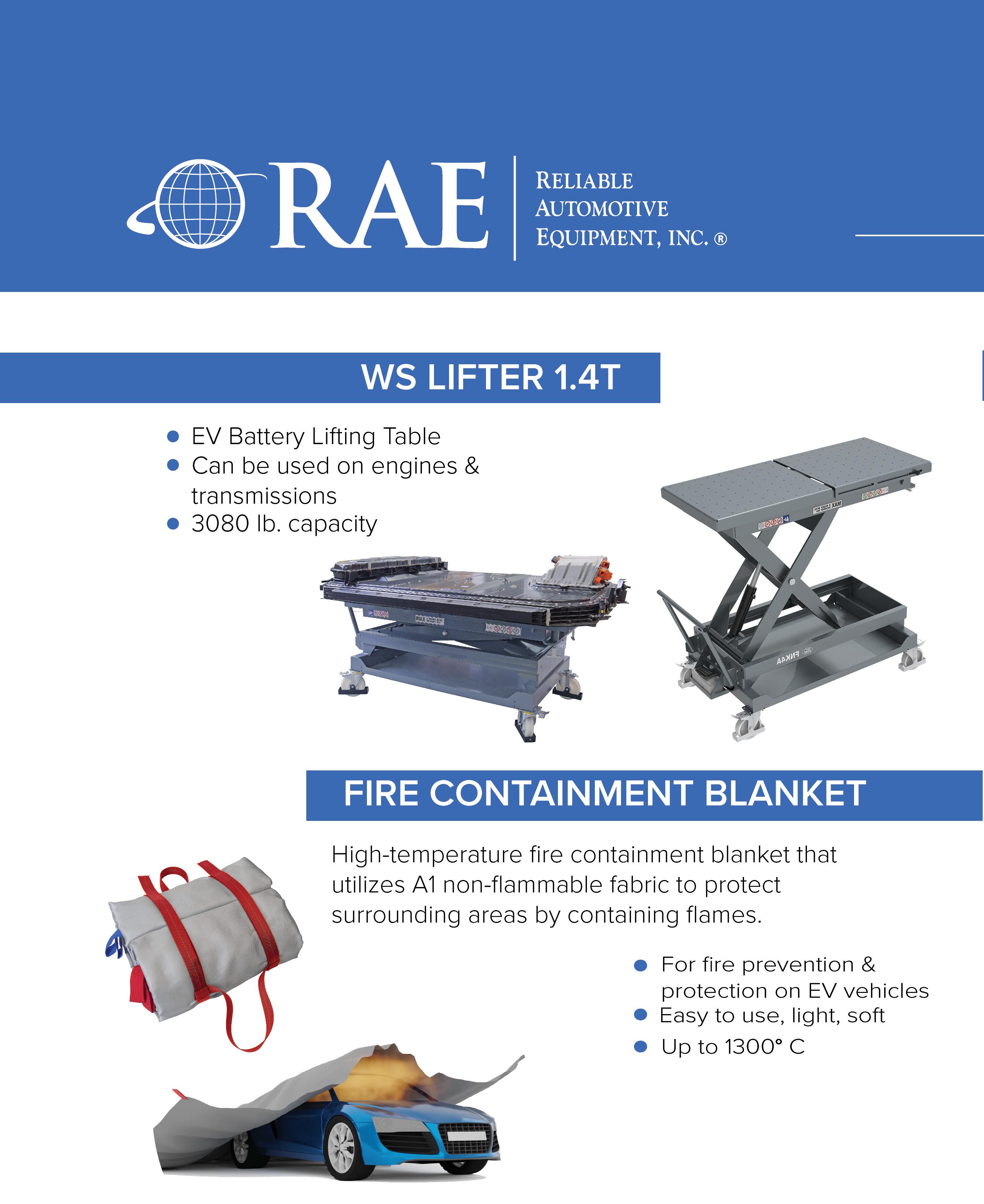

continued from pg. 17
inspired,” he added. “This can be a tough business, but it becomes less tough when you realize what you’re connected to and all the resources that are available. Events like these offer solutions that shops can take home to help them manage that toughness a little easier.”
Outgoing Education Committee Chair Amber Alley (Barsotti’s Body & Fender; San Rafael, CA) partnered with Incoming Education Committee Chair Dominic Martino (Gold Coast Auto Body; Chicago, IL) to present the Kool Tools discovered at SEMA 2022, including an orbital polisher from Milwaukee Electric Tools, a torsion bar from KECO Products, a body buggy from Dent Fix and nearly a dozen more innovative products to make body work easier and more efficient.
But tools aren’t just important for shops; schools educating the next generation of collision repairers also need access to up-to-date tools and equipment. Continuing the program started last summer to award a level two glue pull repair system to one vo-tech school per


quarter, based on nominations from SCRS affiliate organizations, Chris White (KECO Products) announced the most recent winner: Collin College (Allen, Texas).
After the meeting adjourned, attendees reconvened to celebrate the life of the late John Mosley, a long-time SCRS Board member and friend to many. “Losing John hit everybody hard,” Schulenburg lamented. “It was a reminder of the importance of the family that we have here. And people say that casually in a lot of organizations, but it’s not casual at SCRS. There is a very deep-rooted connection among our Board, our affiliates and our members, which is what drives this organization’s successes. It’s because of that connection, that care and that love which exists amongst our group. And it’s really one of the most genuine things that exists in this industry. I’m proud to say that SCRS is a community, a society and a family, and I’m proud to be part of it.”
More information about SCRS is available at scrs.com H&D
You’ve got the right tools, staff, technology and procedures to give your customers the best repair possible. The missing piece of the puzzle? Genuine Volkswagen Collision Parts. Contact an authorized dealer today and find your perfect fit.

Alexandria Volkswagen 107 West Glebe Rd.
Alexandria, VA 22305
703-684-7007
Fax: 703-684-4138
e-mail: parts@alexandriavw.com
Karen Radley Volkswagen
14700 Jefferson Davis Hwy. Woodbridge, VA 22191
703-550-0205
Fax: 703-643-0081
Ourisman Volkswagen of Bethesda

5415 Butler Road
Bethesda,MD 20816
301-652-2452
Fax: 301-652-2589
e-mail: vwwholesale@ourisman.com
Fitzgerald Volkswagen 114 Baughmans Lane
Frederick, MD 21702
Toll Free: 800-545-4745
Fax: 877-696-1841
e-mail: parts@fitzmall.com
www.fitzparts.com
Fitzgerald Volkswagen of Annapolis
34 Hudson Street
Annapolis, MD 21401
Phone: 410-224-4636
Fax: 410-224-4264
www.fitzmall.com
Ourisman Volkswagen of Laurel 3371 Ft. Meade Rd.
Laurel, MD 20724
Phone: 301-498-6050
Fax: 301-498-0157
www.laurelvolkswagen.com
Ourisman Volkswagen of Rockville
801 Rockville Pike
Rockville, MD 20852
Parts Direct: 301-340-7668
Toll Free: 855-417-4511
Fax: 240-499-2488
e-mail: rockvilleparts@ourismanautomotive.com
www.ourismanvolkswagenofrockville.com

Big things are in store for the Collision Industry Conference (CIC) as it celebrates its 40th anniversary this year – beginning by breaking all previous attendance records at its first meeting of 2023 as it heads to Richmond, VA in April.
“Registration prior to the meeting was the highest it’s ever been; it’s really exciting to see how our organization is growing,” Administrator Jordan Hendler exclaimed. “CIC’s vision is reaching more and more industry professionals as we celebrate this monumental anniversary, and we’re planning even bigger and better events as the year continues.”
CIC Chairman Frank Terlep welcomed attendees to the first meeting over which he has presided, and he set the tone (and many of the topics) for the day by predicting the top 10 influences for 2023: consolidation, ADAS, employee shortages, insurance companies, parts, OEM influence, electric vehicles (EVs), business technologies, economic uncertainties and governmental regulations. When polled, 32 percent of attendees indicated that employee shortages will have the biggest impact on their businesses this year…and CIC demonstrated its ability to deliver relevant and timely content with several presentations focused on that topic.
Continuing CIC’s 40th anniversary celebration, the first special presentation of the day provided “Industry and Safety Systems Highlights” and was presented by “the man with the second most amount of energy in the room,” according to Terlep as he introduced Mike Anderson (Collision Advice) to the CIC stage for only the second time ever.
Beginning by acknowledging that the “level of customer service required by today’s vehicle owners is off the charts,” Anderson observed that those expectations are liquid, meaning they change constantly. A decade ago, the average consumer compared a body shop to other automotive businesses, but these days, consumers compare shops to Amazon, Uber and similar businesses, requiring collision repairers to “deliver an exceptional customer service experience because that’s what the customer is demanding.”
Today’s consumers require “social proof that we can be trusted because they have a ‘trust, but verify’ mentality. We need to stop doing things the way we’ve always done them and open up our minds to create a more modern customer service experience,” which includes
having a 24/7 digital presence that allows consumers to engage with the shop outside normal business hours. “They want instantaneous gratification and engagement,” Anderson stressed, adding that he didn’t want to “debate the merits of photo estimating, but we need to look at it as a marketing strategy!”
Redirecting his focus to internal customers, Anderson acknowledged that administrative staff in shops are completely overloaded. “And if we don’t fix this, we’re going to lose people. We’ve got to figure out how to eliminate disruption, and that means embracing technology as an industry to reverse this trend. We don’t have a recruitment problem, ladies and gentlemen; we have a ‘we-don’toffer-good-enough-pay-and-benefits’ problem. We’re competing with Amazon and burger joints that offer three weeks vacation, 100 percent paid medical insurance, retirement plans and flexible work hours. As an industry, we must develop a standard career path. These days, it’s not about who gets the car; it’s about who gets the people, and whoever has the best culture wins.”
Anderson identified one more arena in which the industry is failing. “We have a moral and ethical obligation to resolve an issue that is the single biggest friction point in our industry. We’ve got to quit sweeping it under the rug: safety inspections. Shops want to do the right things, but they are getting caught in the middle. Recognize that nearly every single manufacturer today requires some type of safety inspection after their vehicles have been in an accident.”
Providing an example of a 2018 Chevy Silverado that underwent a safety inspection, Anderson shared that the inspection revealed a cracked dash carrier that would have gone undiscovered if the shop had not followed the OEM recommendation. “Every time I don’t perform the safety inspection, I run the risk of missing something like this. We cannot make good decisions without being educated, and we also can’t just use our voice by showing up here at CIC,” he urged attendees to also participate in non-collision “industry events where people from the mechanical industry are showing up and trying to influence legislators that they have our best interests at heart. They don’t speak for me, but we have to be there to speak for ourselves.”
It’s also time for shops to stop letting insurers speak for them, and that begins by recognizing the difference between an estimate and a repair plan, according to the Estimating and Repair Planning and
Industry Relations Committees’ presentation. Using an example of a Tesla with impact to its liftgate, Ron Reichen (Precision Body & Paint) explained that the shop had already inspected the vehicle and confirmed that the best option was to replace the liftgate.
After the consumer declined the insurer’s recommendation to take the car to a “network” facility multiple times, the adjuster provided a preliminary estimate of $1,000.99 – an estimate that took just 14 minutes to conduct. Having spent more than five hours capturing OEM procedures, researching parts and writing an actual repair plan, the shop established a much different price point of $10,161.96.
“That’s prior to disassembly, so it’s not even a complete repair estimate. Just look at the administrative time that’s gone into that initial repair plan, and think about how many vehicles someone can look at in an eight or 10 hour workday,” Reichen stressed, as a poll revealed that 53 percent of CIC attendees see time constraints as the biggest barrier to repair planning. “Time is something we can’t get back, so how do we manage those time constraints and efficiently use our time?
“We want to get away from estimating and start talking about repair consultations,” Reichen advised. “That starts with setting customer expectations at the first point of contact. We need to qualify the customer and help them understand that their vehicle is unique; no two accidents are the same, yet they possess similarities in the sense that there are many standard repair procedures and processes involved with today’s complex vehicles and their safety systems. We need to take time to explain the claims process and also how we triage the vehicle.”
Of course, some customers will have a preconceived idea of how your business operates no matter how hard you try to set proper expectations. “We don’t need every job…sometimes, we have to fire a customer,” Reichen admitted. “But engaging in that open communication upfront provides the opportunity to sell yourself and establish the differences between you and the competition.”
Most importantly, Reichen emphasized that “estimates are only a guess. Is there really any value to that first initial estimate? Because it doesn’t seem like it produces much other than additional delays.”
The materials that are used to comprise a vehicle structure often has implications related to how it is repaired, according to Parts and Materials Committee Chair Aaron Schulenburg, who moderated the panel on “The Role of Vehicle Materials in Process and Business

Decisions.” He also noted, “Those materials are going to inform our repair decisions, including how much time you spend and how you use the resources available to you to write proper and complete repair plans. By understanding the makeup of the vehicle, you’ll be better able to make informed decisions and educate the consumer.”
“Technology is advancing at a rate faster than we’ve ever seen,” acknowledged panelist John Strong (Mitchell). “Whether it’s about parts composition, manufacturing processes, telematics or advanced safety systems, vehicles are becoming more complex and requiring more considerations than ever before, and what a vehicle is comprised of affects how or if it can be repaired. For example, aluminum has very specific repair requirements. And I cannot talk about ADAS enough; it’s no longer if it needs to be calibrated but whether it requires a static or dynamic calibration. We also need to be paying attention to OEM parts recommendations since the use of certain non-OEM parts can possibly lead to adverse effects to the vehicle.”
Benito Cid (Mercedes Benz) agreed. “If there’s damage to the infrastructure, you need to understand what material it is and what’s involved in taking care of the repairs. There’s a lot of thought that goes into designing and building a vehicle to ensure we have this idea of integral safety. A lot of these systems talk to each other and make decisions in fractions of a second.”
“Those decisions are based on a matter of repeatability and predictability,” Jason Scharton (3M) added. “Hopefully, you’re starting to understand how interconnected everything really is. We go through a tremendous amount of testing to make sure we’re meeting all the specifications, and that we can produce consistent results.”
David Luehr (Elite Body Shop Solutions) addressed the ongoing tech shortage in a special presentation, “Becoming the Employer of Choice in Your Market.” The presentation offered those in attendance a preview of “Supercharge Your Business and Attract the Best Employees”, which Luehr will debut at the NORTHEAST® 2023 Automotive Services Show, taking place March 17-19 at the Meadowlands Exposition Center in Secaucus, NJ. As Luehr explained, although organizations like the Collision Repair Education Foundation (CREF) are working to attract young people into the industry, the talent shortage is still creating a lot of stress for many shop owners.
continued on pg. 24
continued from pg. 23
“Attracting young people into our trade only solves half the problem because we’re pushing them into an industry that often is not a good fit for them culturally,” he pointed out, noting that experts predict that over 70 percent of the workforce will be Millennials and Gen Z by 2025. He suggested that “the perceived shortage is often the result of using highly skilled technicians to perform low-skilled work, so we have to ask if we are utilizing our A-techs wisely and how that is contributing to our so-called talent shortage.”
Although older generations often complain about the younger generations’ work ethic, Luehr suggested, “They know how to work hard; they just don’t want to work hard for you. I don’t believe we have a shortage of talent, but I do think we have a shortage of great places for them to work. This is a global issue that can only be solved locally, and it begins with each of us taking personal responsibility for the attractiveness of our businesses.”
Encouraging attendees to build a business that “defies the status quo,” Luehr explored five elements that shops can use to determine “if your business is attractive…or if it’s repulsive.” Those elements include meaningful work, acknowledgement, measurement, teamwork and goal guidance. “That’s how outlier businesses do it, and they get the best employees.”
The best employees often start as students, though, and the Talent Pool Committee invited Todd Grothe to discuss how the Newgate School’s unique business model is producing entry-level technicians. Founded nearly 40 years ago, the post-secondary non-profit technical school provides tuition-free automotive training and career placement for young adults.
“People donate cars, which the students repair, and then we sell the cars at auction,” Grothe explained how the school is funded. “This allows us to teach whoever we want; we’re completely autonomous.”
The school trains 10-15 students at a time, but rather than having official start and end dates for the school year, they accept students at any time, teaching them until they’re ready to graduate, which typically takes around nine months. The first two weeks are spent training them on detailing to gauge their interest in the field before moving students into either the mechanical or auto body program where they focus on repeating basic jobs until they start to develop the right habits.
“Some get really far really quick. We’ve had students that seem like they were born to do this,” Grothe said. “Others struggle the whole way through, but that doesn’t mean they won’t become great technicians too; everyone has different learning styles, and they all deserve a chance. Every so often, we’ll have a student, and it just never fully clicks with them, but they’re hard-working, so we’ll focus on training them on tasks they can excel at like becoming a solid detailer.”
By repairing and selling cars at auction, all students graduate
without debt, and the Newgate School even equips them with an entry-level toolbox to begin their careers before helping them find local employment.
“I can certainly brag about having 100 percent placement,” Grothe boasted. “Part of that is because we really are a great school with a great program, but the other part is situational due to the industry’s needs.”
Since the school teaches basic skills, they’ve been able to get by with their current equipment, but “we’re certainly 10-15 years behind as far as where cars are now since we get donated vehicles,” Grothe acknowledged. “It hasn’t been an issue yet, but we’ll definitely need to invest in updated tools and equipment as the donated cars evolve.”
Demonstrating the importance of investing in collision students, Ron Reichen and Society of Collision Repair Specialists (SCRS) Board member Toby Chess took the stage for a presentation by the March Taylor Memorial Fund which was designed to give “the next generation of collision repair techs a step upward through tool scholarships and mentorship.” Tools awarded to the Center for Educational Technology and Excellence (Salem, Oregon) were accepted by instructor Alex Crays, accompanied by three students who spoke about their experiences at the school and expressed gratitude for the opportunities their education will provide. For more information about the March Taylor Memorial Fund, visit marchtaylorfund.org
Talent Pool Committee Co-Chair Petra Schroeder indicated that rather than reinventing something that has already been invented, it may benefit the industry to look for opportunities to collaborate. “We’ve been talking about this topic for a while. We all experience trouble with not having enough workers, but there’s a lot of energy at many levels to attract, advance and retain technicians. Various marketing efforts showcase how much technology is present in today’s cars and what’s necessary for a safe and proper repair, but I can guarantee that not many people outside our industry know these things.
“The tremendous changes in our industry over the last decade have gone largely unnoticed by the general public, and I believe it’s critical to combine forces, collaborate and share ideas, concepts and resources in the interest of collision repair professionals nationwide, to drive awareness and highlight the appeal of the exciting and rewarding career opportunities within our industry,” she expressed, suggesting the industry work together to hire someone like Mike Rowe of Dirty Jobs or Jay Leno to “assist in getting our message out to schools, students, instructors, administrators, parents, families and to the general public.”
CIC’s next meeting is scheduled for April 12-13, 2023 in Richmond, VA. Registration information, as well as presentations from previous meetings, can be found at ciclink.com H&D
Parts and


the perfect fit at the perfect price. 10% off on all parts orders when you mention this ad.








This year, as Albert Kemperle Inc. celebrates its 83rd anniversary, BASF also celebrates its 158th anniversary. We are proud of our decades of partnership with BASF and years of serving the auto paint and body industry together. Kemperle’s founders would be proud of this relationship and the growth their company has experienced because of it.
Today, as we look forward to many more decades of service to our customers, we find ourselves filled with gratitude. The creativity, hard work, and sense of responsibility of the people working for our two companies have made us what we are today. Thank you for your many years of loyalty.





Learning better, together.
BY CHASIDY RAE SISKNext month, WMABA will partner with the Carolinas Collision Association (CCA) to host the second annual Southeast Collision Conference (SCC), scheduled April 14-15, 2023 at the Meadow Event Park (Doswell, VA). Following the national events for both CIC and SCRS being held in downtown Richmond, VA, the SCC will have its third annual event - and first in Virginia - featuring education classes from national presenters, exhibitor booths in a full-sized tradeshow, attendee raffles, product demos, skills contests with prizes and even an association awards dinner Thursday, April 13.
This year’s addition of WMABA’s Collision P.R.E.P. (Professional Repairer Education Program) has created even more buzz, and WMABA is excited to share the 2023 educational slate, which is filled with some of the industry’s favorite trainers who will be providing engaging educational opportunities for every level in the shop.
“We’re very pleased with the all-star lineup of industry educators on the agenda for our second Southeast Collision Conference and our first year teaming up with WMABA,” CCA Executive Director Josh Kent stated. “One of my biggest goals for 2023 was to include interactive classes that will engage the audience, and the Collision P.R.E.P. educational slate certainly covers that intention!”
No presenter in the collision repair industry deserves the label of “engaging” more than industry icon Mike Anderson (Collision Advice), so it’s fitting that the 2023 CCA educational slate kicks off with his discussion on how being average just doesn’t cut it in today’s industry environment as he demonstrates how one must “Be Extraordinary!” in delivering customer service, building shop culture and in all other ways in order to produce extraordinary results.
Few results matter in a shop as much as profitability and quality, both of which are directly related to the repair plan written, and Danny Gredinberg of the Database Enhancement Gateway (DEG) will deliver “Repair Planning Resources: Write Your Strongest Sheet” to empower shops to capture more dollars using inexpensive and FREE resources to maximize every repair that goes through your shop, like the DEG and the Society of Collision Repair Specialists’ (SCRS) Blueprint Optimization Tool (BOT).
“The ability for a repairer to write a strong sheet, starts with a thorough understanding of the vehicle they are working on as well as utilizing all the information available to them,” Gredinberg stressed. “It’s 2023, so there shouldn’t be any excuses, like ‘I don’t have the information to write a proper repair plan.’ We need to reinforce to every repair planner that there are a number of available resources to help them capture necessary billable operations. It’s one thing to see a flier or hear a recommendation, but seeing the resource in action will prove the benefits of utilizing the tools and information to leverage the strongest repair plan to perform a safe and proper repair.”
He hopes that class attendees will “quickly realize how much money they are leaving off the repair plan, especially when it comes to work they are performing and not being compensated for. Technicians are always held to a HIGH standard to perform quality repairs. As a repair planner, we need to hold ourselves accountable to capture
those operations. We will show you the tools and resources out there that can maximize every repair plan put through your shop.”
It’s also vital that shops are capturing the right amount for their hard work, and during “Properly Identifying Labor Types and Rates,” John Shoemaker (BASF) will identify the skill sets required to repair today’s complex vehicles, delving into the labor types – and Labor Rates – associated with those skills. Shoemaker wants attendees to “understand that a Labor Rate should be developed based on costs because having an equitable Labor Rate will allow shops to train and retain their technicians.
“There was a time when a vehicle repair consisted of 70 percent body labor, 20 percent mechanical labor and 10 percent frame, but a modern vehicle repair would most often have a ratio closer to 20 percent body, 60 percent structural and 20 percent mechanical when required skill sets are properly identified. Although the evolution of vehicle design has dictated a change in that ratio, collision centers are still accounting for labor as if nothing has changed,” he explained. “The focus of this seminar is to illustrate the changes of vehicle design and how it has altered the labor types used in repair. As the labor types are defined, I will discuss how to calculate labor costs, taking into consideration the additional training required to perform the repairs as well as the costs to invest in and maintain OEM certifications. Knowing that labor sales is the primary profit center of a collision center, understanding that Labor Rates should be based on the costs to perform that labor allows collision centers to maintain profitability as vehicle design and repair requirements continue to evolve.”
ADAS certainly ranks among the most pressing evolutions impacting today’s collision repair facilities, and SCC addresses shops’ burning questions with two sessions devoted to the topic. First up, Frank Terlep (OPUS IVS) provides information on “How to Open and Operate a Successful ADAS Services and Calibration Business,” a course designed to introduce attendees to “the challenges and opportunities associated with opening and operating an ADAS service and calibration business, such as the financial and business opportunities, facility and equipment requirements, the seven ‘Moments of Truth’ with ADAS services and calibrations, calibration workflows best practices, proper documentation and ADAS system validation,” according to Terlep.
“This is an important topic for shops because I believe ADAS services, calibrations and validations are the biggest opportunities the collision industry has seen in 20-plus years!” he emphasized. “There are almost 100 MILLION ADAS-equipped vehicles in operation today, and by 2026, there will be the need to perform almost 10 million ADAS calibrations, worth more than $2 billion in revenue. Since ADAS technologies directly affect acceleration, braking and steering, it is important to understand the importance of detailed documentation and validation procedures to effect a safe repair.”
continued on pg. 30
continued from pg. 29
Josh McFarlin (AirPro Diagnostics) will revisit the timely topic of ADAS in “Own Your Calibrations,” lending insight into how shops can increase profit and maintain better control of cycle time by keeping ADAS calibrations in-house.
“Calibrations are a critical element of performing a safe repair of the vehicle,” McFarlin points out, indicating that attendees will walk away from the course with “information on what calibrations are (and what they are not) and an increased comfort level that there are lots of solutions out there that will allow you to do some or all of the needed calibrations in house.”
During “From an Auditors’ Perspective, where Repairers are Hitting and Missing the Objectives,” Rick Miller (Wadsworth International) will team up with Dennis Smoyer (Subaru) to explore how the Repair Quality Assessment (RQA) helps ensure a consistent quality result by encompassing all aspects of the repair process, utilizing tools provided by the vehicle manufacturer.
“The collision industry repairer is pulled in all different directions by vehicle owners, insurance companies and manufacturers, while simultaneously managing the supply chain challenges,” Miller explained the course objective. “What shouldn’t change is how to repair the vehicle correctly while it is in their charge. The repair location is responsible for the quality and safety of each repair, regardless of all the influencing elements. Consistency and transparency will reduce the stress in a stress-purchase environment. We hope to teach class participants how to step away from assumptive quality to a known collaborative process, ensuring a consistent quality of repair and reducing the collective stress of the auto body experience.”
Mark Olson (VECO Experts) will deliver an interactive, hands-on look at how “Organization + Process = Profitability,” as he takes a look at generational differences to examine the holes in how the old model does things and how the new model will do things. Taking participants from each generation, the class will show simple hands-on tasks are approached differently and how and why conflicts arise – and how to develop systems to have it work for all.
WMABA Executive Director Jordan Hendler commented on the two panel discussions, saying, “The panelists we have acquired for these two sessions are folks you may not otherwise get to meet without traveling outside of our region. These are amazing opportunities to hear directly from the top experts and vehicle manufacturers on such important topics such as electric vehicles and
shop trends nationwide. You cannot afford to miss this!”
On Friday, “Preparing Your Shop for Electric Vehicles: Repair Strategies and Vehicle Management” will include panelists ranging from all-electric manufacturers to longstanding OEMs that are putting new electric vehicles (EVs) on the market as they explore the considerations that repair facilities should make prior to, during and after repairs when it comes to supporting their EV customers’ vehicles.
During Saturday morning’s “Repairer to Repairer: Open Discussions on Shop Trends,” several shop owners will participate in an open dialogue on repairability, revolutions, insurance relations, best practices, vehicle advancements and more. Join the conversation as industry leaders examine ways they’ve overcome the hurdles faced by shops around the country when it comes to recruiting, efficiency, repair procedures and other areas of the business.
SCC 2023 will conclude with “Repairer to Repairer: Stop Estimating and Start Repair Planning,” presented by SCRS Secretary Michael Bradshaw (K&M Collision). Attendees will learn the process of an OEM-compliant repair, step by step, as well as how to accurately capture all performed operations within the repair blueprint. Attendees will walk away from the class with more knowledge related to identifying required repairs, repair documentation best practices, utilization of OEM repair information, utilization of readily available industry resources for identifying and capturing non-included operations, the differences between an estimate and a thorough repair blueprint, how crucial the blueprinting process is to proper repairs, shop efficiency and overall profitability.
“The tone for everything that happens within a collision repair shop is set by the estimating and blueprinting processes,” Bradshaw pointed out. “There is not one single thing that can have the impact proper blueprinting has on things like cycle time, touch time, efficiency, repair quality and – most importantly – overall shop profitability. Quite simply, this is an area that virtually every shop across the country could improve upon and see positive effects across the shop.”
Stay tuned to Hammer & Dolly for additional updates on the 2023 Southeast Collision Conference. Register by scanning the QR code on this page or visit southeastcollisionconference.com H&D
Please note: Speakers, times and class descriptions are subject to change prior to the event.

PLATINUM SHOW SPONSOR

VISIT US AT NORTHEAST 2023
BOOTH #227
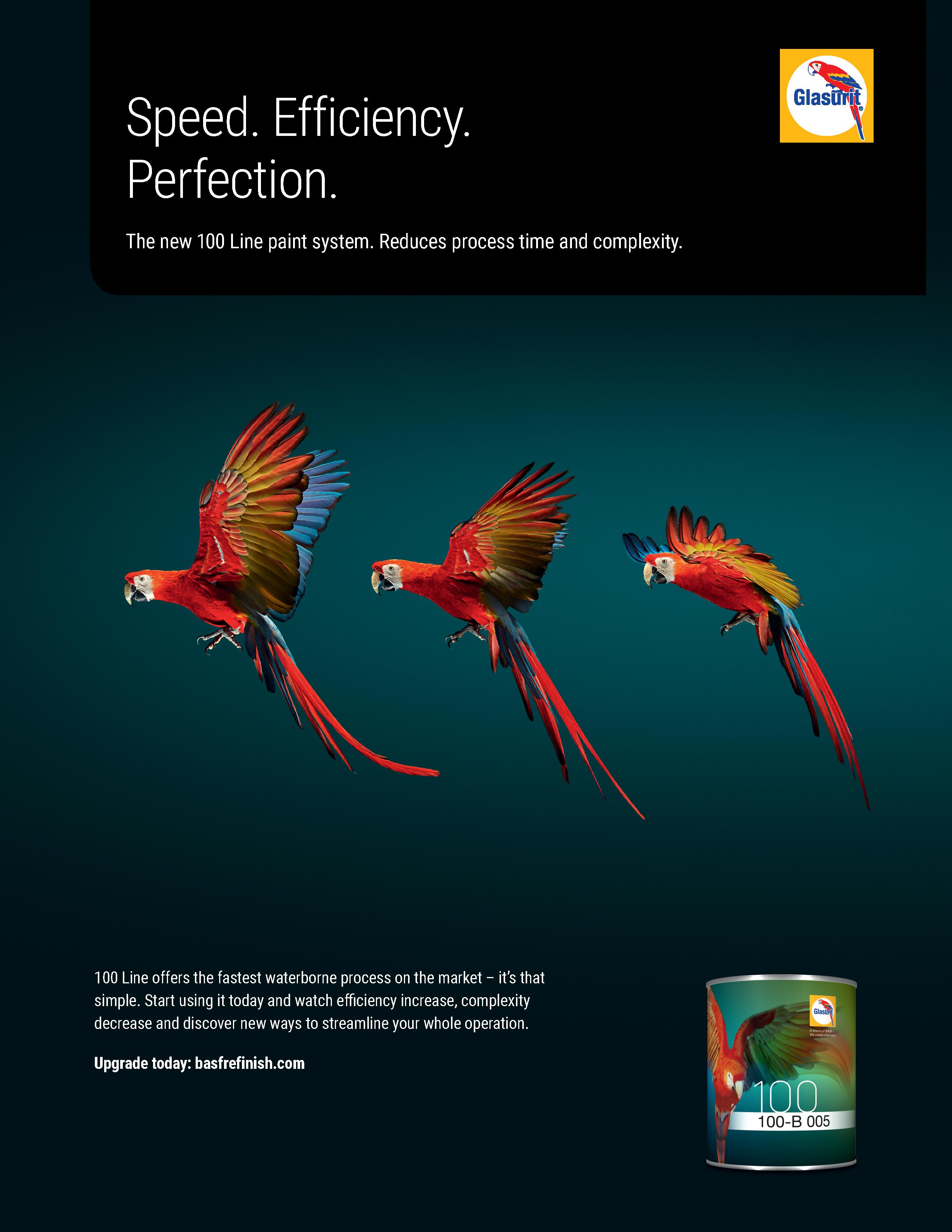
This month, we “ASK MIKE” for his thoughts on why shops need to participate in WMABA’s Labor Rate Survey and similar industry projects. We at Hammer & Dolly hope you find the following exchange useful, and we encourage you to reach out to us if you have a question for Mike on this or any industry-related matter that he can answer in a future issue.

Hammer & Dolly: Before you became an industry consultant, you spent many years as a member of WMABA and even served time on the Board. Based on your experiences, what did WMABA membership provide you in terms of information you wouldn’t have gained on your own? Why do you feel it’s important for members to participate in WMABA’s Labor Rate Survey?
Mike Anderson: Obviously, Top Gun: Maverick was one of the biggest movies released in 2022. One of the biggest things about that movie and its predecessor, Top Gun, is the importance of having a wingman – someone in your blind spot. In all the years I was involved with WMABA, the association helped people understand where their blind spots were in their businesses. When you’re so busy just working every day, you need somebody to let you know if something is going on. WMABA’s knowledge of and involvement in things on a national level – especially with its close relationship with the Society of Collision Repair Specialists [SCRS], SEMA and the Collision Industry Conference [CIC] – lets members know what’s coming down the pike.
In today’s world, information is coming at us at lightning speed. I’m sitting at my computer right now, and I have 7,091 emails in my
inbox. I wish I had a WMABA to sort through them and determine the priorities! WMABA does a great job of helping members understand the hot topics in the industry and the things they need to be aware of – especially legislatively. I can’t say enough about the importance of what WMABA does.
Every year, I pick a theme that I talk about when I travel across the industry as a speaker. My theme for 2022 was, ‘Grow your team, grow your business and change the way you compete.’ We need to grow our team. That could mean taking your existing people and helping them get better at what they do or bringing in new hires. Everybody talks about staffing challenges. Well, part of those staffing challenges comes from not paying a competitive wage. We’re competing with the Amazons of the world and even burger joints and convenience stores that start people out at $20 an hour, three weeks’ vacation and 100 percent paid health insurance. We need to ensure that we can pay people more or offer better healthcare or other benefits, and doing that requires profitability.
In 2017, the average body shop was spending about 10 percent of their sales on administrative wages. Today, that number is closer to 15 percent. Somehow, we have to offset that. There will also be greater equipment and training demands as electric vehicles and other technologies possibly take hold. If that’s the case, then we absolutely have to stay profitable. One way to ensure profitability is to look at your processes. Another way is to capture more not-included operations. Another thing you may need to do is reassess your Labor Rates. I’ve never been a fan of those people who just raise their Labor Rates by $2 an hour – that’s one of the most ludicrous things I’ve heard in my life! To me, when you go to look at your Labor Rates, they need to be based on a number of things, such as your property taxes – which are different in Alexandria than in Fredericksburg. Also, look at your OEM certifications compared to what somebody down the street might have.
There are a lot of considerations that we need to look at in regard to the Labor Rate. Another tool you can use in gaining greater insight
into Labor Rates is to participate in WMABA’s survey whenever the association makes it available.
H&D: Absolutely! One comment we hear a lot from shop owners is that WMABA’s surveys – whether on the Labor Rate or insurance companies – allow them to provide information to the association without fear of repercussions.


MA: That’s the biggest value I see for an association. Members can bring up something without fear of retribution, especially if they are DRPs. So, it’s a big deal.

H&D: What advice would you offer someone who is new to taking an industry survey so they can get the most out of that process?

MA: When you go to take a survey, it’s really important that you set aside time to do it. You don’t want to be distracted; you want to make sure that you’re putting in accurate data and that you thought things through. Also, don’t just plug a number in; be willing to justify that number. Again, if you’re raising your Labor Rate by $2 an hour randomly, that’s just stupid. Build a budget or a forecast. I used to
Mike Anderson is an Accredited Automotive Manager (AAM) and the former owner of Wagonwork Collision Centers, two highly acclaimed shops located in Alexandria, VA. He has served as a member of many industry organizations throughout his career, including the WMABA Board of Directors, the Mitchell Advisory Board, the MOTOR Advisory Board, the ASE Test Review Committee, the National Auto Body Council, the Collision Industry Conference and the Society of Collision Repair Specialists. Additionally, he is a past Virginia SkillsUSA chairman, serves as a facilitator for Axalta Coating Systems’ highly recognized Business Council 20 Groups in both the US and Canada and facilitates numerous courses for Axalta Coating Systems’ Educational Series. He currently offers expert industry consulting via his latest venture, Collision Advice (collisionadvice.com). H&D
develop one for my collision repair business every October. I’d base it on what I was going to need to spend on my computer equipment, upgrades, training and facility improvements. All of that dictated what my Labor Rate was going to be. Don’t just do something carte blanche; put some thought into it and take part. If you don’t take the time to do it and participate, then don’t complain about the way things are. H&D









